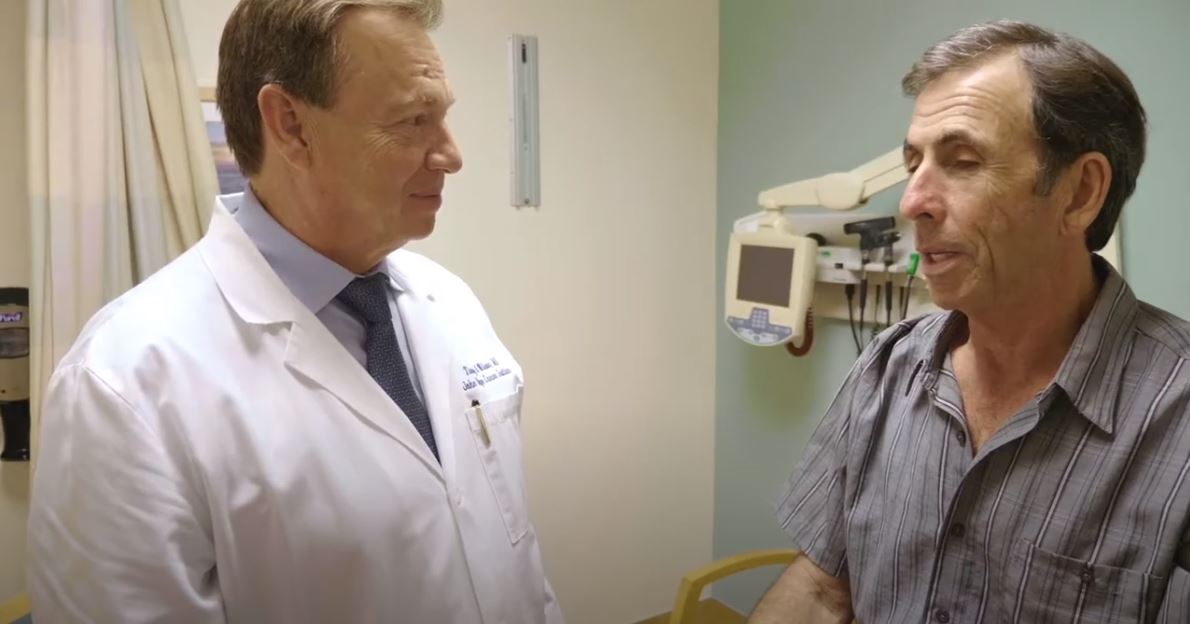
September is Prostate Cancer Awareness Month. Every three minutes, a man is diagnosed with prostate cancer. One out of nine men will be diagnosed with prostate cancer in their lifetime. That’s why it’s important to spread the word and educate men and women about prostate health and protection.
Understanding the Prostate:
The prostate is a small gland about the size of a walnut. It is located deep inside the groin, between the base of the penis and the rectum. Most prostate cancer begins in the back of the prostate near the rectum. While not essential for life, the prostate is very important for reproduction. The prostate supplies the seminal fluid which mixes with sperm from the testes. Seminal fluid helps the sperm travel and survive.
Prostate Cancer Prevention:
Doctors don’t completely understand the cause of prostate cancer but they have identified some of the risk factors. Risk factors for prostate cancer include age, race and ethnicity, family history, and diet.
This risk for prostate cancer rises after age 50. Having a brother or father with the cancer can double your risk. Prostate cancer occurs more often in African-American men, and white men are at greater risk than Asian-American and Hispanic men.
Men with diets high in red meat and low in fruits and vegetables are at a greater risk of developing prostate cancer. Exercise, consume a healthy diet, and schedule an appointment to see your doctor if you experience any of the warning signs we have listed below.
Warning Signs:
Unfortunately, there usually are no warning signs for prostate cancer. The growing tumor does not cause pain, so for many years patients may be unaware of the cancer.
In rare cases, prostate cancer may cause symptoms:
- A need to urinate frequently or difficulty starting or holding back urination
- Weak, dribbling flow, or painful, burning urination
- Difficulty having an erection
- Painful ejaculation or decrease in the amount of fluid ejaculated
- Blood in the urine or semen
- Pressure or pain in the rectum, lower back, hips, pelvis, or thighs.
While these symptoms don’t necessarily mean you have prostate cancer, be sure to make an appointment with your doctor if you experience any of these symptoms.
Screening for Prostate Cancer:
There are two primary ways your doctor will screen you for prostate cancer.
Digital Rectal Exam
A digital rectal exam is a common and useful screening tool where your doctor will examine the prostate by inserting a gloved finger into the rectum.
PSA Test
A PSA test will also be used during screening. The PSA test can help catch the disease early when treatments may be more effective. This test measures the levels of prostate specific antigen which is a protein produced by the prostate and mainly found in semen. When there is a problem with the prostate, more PSA is released. As the PSA number goes up, the chance that cancer is present increases.
Learn more about prostate cancer screenings.
Treatment for Prostate Cancer:
There are a wide range of tools available to treat prostate cancer. Your doctor will work with you to design a personal treatment plan, which is best for your condition, while managing side effects and preserving prostate function.
Robot-assisted minimally invasive prostate surgery (prostatetomy)
One of the best kind of surgery that’s available for men is referred to robotic assisted radical prostatectomy. This is a technology that was developed and approved by the FDA in the U.S. for prostate cancer surgery in 2001. Allows surgeons to do a more precise, consistent, reliable and reproducible surgery, so as to give the best chance of removing all of the cancer and yet still allow men to return to their normal lifestyles as quickly as possible.
Focal One High Intensity Focused Ultrasound
In February 2019, Saint John’s Cancer Institute at the Providence Saint John’s Health Center became the first medical center in the United States to acquire Focal One HIFU high intensity focused ultrasound for treating patients with localized prostate cancer.
Focal One is one of the most precise tools for delivering target, non-invasive ablation of diseased prostate tissue. For more information on this treatment, please visit the blog post about Focal one HIFU for Treating Prostate Cancer.
Learn more about other Prostate Cancer Treatment Options
Watch a Prostate Cancer Patient Testimonial
Socially distant ways to spread awareness of prostate cancer:
- Wear blue in support of Prostate Cancer Awareness
- Join the Prostate Cancer Foundation #eatittobeatit event in support of prostate cancer awareness month: https://www.pcf.org/eat/
- Join ZeroCancer.org in their events and share their resources to spread the word: https://support.zerocancer.org/site/SPageNavigator/CountMeIn
Schedule an Appointment
If you have any questions about prostate cancer or concerns about your prostate health please schedule an appointment with one of our world-renowned physician. To make an appointment, please call (310) 582-7137.

